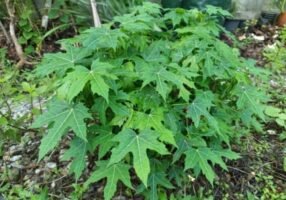Home gardens are a beautiful thing to have. They not only keep the house’s appearance in check but also keep the air clean by keeping it free of contaminants.
These are your finest options for avoiding ‘artificials’ and transforming your surroundings into something more naturally occurring. There is no wrong method to cultivate plants in your yard, which is the best thing about having a home garden. There are several options available to choose from to assist flourishing in your environment, ranging from daffodils to money plants.
Compared to the other plants in your gardens, climber plants stand out. They are also available in a wide range of beautiful hues, so there is something for everyone to enjoy. You can choose from a variety of climber plants to improve your garden’s appearance. Read on to learn more about different types of climbers and how to care for them.
What are climbers?
Climbers are plants that climb up tall objects like fences and other trees. They have an extremely long, thin, and weak stem that cannot stand upright. So, they use external support for growing vertically and carrying their weight. Climbers use special structures known as tendrils to climb. Some climbers include pea plant, sweet gourd, grapevine, money plant, runner beans, jasmine, and green peas.
What type of structures support climbers?
The external support used by climbers to grow upright is known as a trellis. It is usually a framework made from metal bars or light wood. You can choose to create your own trellis or you can buy one online or the nearest nursery. You can also opt for using walls, fences, arches, and porches to support your climbers as long as you make sure that the support system of your choice is durable. Also, there are some climbers that do not require a trellis. So, do your research on the type of climber you plan on planting for a better understanding on the kind of trellis you’ll need.
Climbers examples
Here are 10 examples of creepers with climber plant names for you to look at:

Source: Pinterest
See also: All about Chinese violet
Japanese Wisteria
Wisteria is beautiful in spring when it racemes of fragrant grape-like flowers cascade in hues of purple, blue, and white. However, as they grow, these woody deciduous climbers require a lot of room, support, and a twice-yearly trimming to keep them in check and blooming lavishly. W. floribunda ‘Multijuga’, which has the longest flowers that hang down about 1m apiece, is a wonderful cultivar to look for.
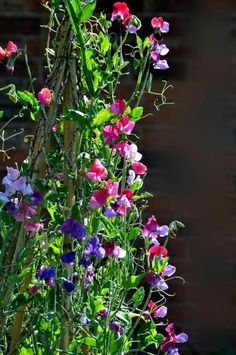
Source: Pinterest
Sweet Peas
Nothing surpasses sweet peas for aroma; they can be started indoors in February or purchased as seedlings in early spring and planted outside after the final frost. Top cultivars include the bicolour, pungently perfumed “Matucana,” the good for cutting “Erewhon,” and the deep-hued “King Sized Navy Blue.” Continue plucking flowers, and the plants will continue to produce them until early October.
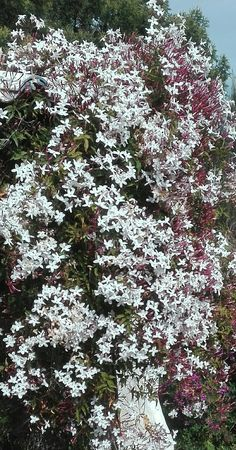
Source: Pinterest
Winter Jasmine
Winter jasmine, or Jasminum nudiflorum, blooms with delectably fragrant yellow petals in the dead of winter before sprouting dark green leaves in the spring. It may grow up to 3 metres high and wide and requires support such as a trellis on walls or fences because its stems do not interweave like those of other clematises. Fortunately, it thrives in either full sun or little shade.
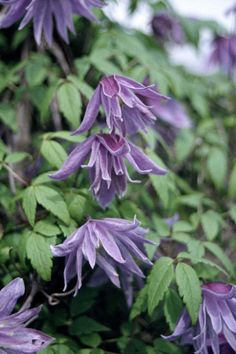
Source: Pinterest
Downy Clematis
With amazing huge double flowers in the colours of pastel to violet-blue that resemble Tinkerbell’s skirt, Clematis macropetala ‘Wesselton’ blooms early. Beautiful bronze-toned buds that first appear even earlier and silky seedheads that appear after flowering both contribute to the attraction. It requires little to no trimming and is a fantastic option for gardens that face north as well as for training up plants and trees.

Source: Pinterest
Sweet potato vines
From June until autumn, Solanum crispum ‘Glasnevin’ blooms profusely with star-shaped mauve-lilac blooms that have brilliant yellow centres. With semi-evergreen leaves and a hardier cultivar than other potato vines, this one is a better option for gardens in the UK. It should be planted in a warm, sunny area where it will have some support and be given room to grow up to 6 metres.
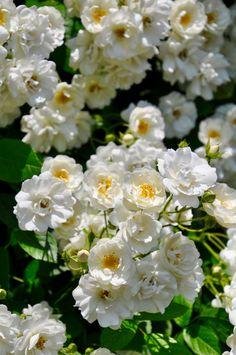
Source: Pinterest
Roses (Ramblers)
Rambling roses, such as the white “Rambling Rector” or the pink-tinted “Paul’s Himalayan Musk,” are magnificent monsters that may reach a height of 12 metres and swiftly cover any support. However, they only put on one show per season, which is characterised by profusions of miniature rosettes. Ramblers should be pruned in late summer after they have flowered for optimal results.
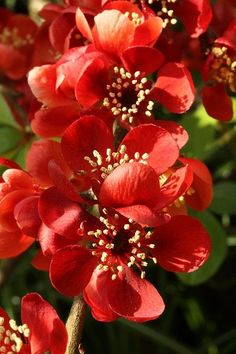
Source: Pinterest
Japanese Quince
One of the first shrubs to bloom each year, Chaenomeles can be trained to grow up a wall or fence by connecting the branches to horizontal wires in a fan shape. The shrub bears little clusters of red, pink, or white blossom along its bare branches before the foliage appears. It can grow in almost any type of soil, in either full sun or light shade.
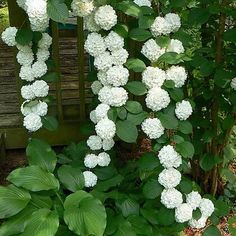
Source: Pinterest
Climbing Hydrangea
The woody climber Hydrangea anomala subsp. petiolaris, which blooms in the summer with white lace-cap flowers, also require a lot of room and should be grown in the ground. This self-clinging hydrangea, which can reach heights of 15 metres, will cling to a wall or fence via aerial roots. It can withstand some shadow, making a north-facing wall an excellent fit for it.

Source: Pinterest
Chocolate vine
The somewhat unusual Akebia quinata is a semi-evergreen climber with spring flowers ranging in colour from purple-brown to dark crimson and has a scent similar to vanilla and spices. It might require regular trimming because it can spread out up to 10 metres in a warm environment on a pergola or other substantial structure. It can also bear odd, lengthy, purple fruit if you have two plants and a scorching summer.
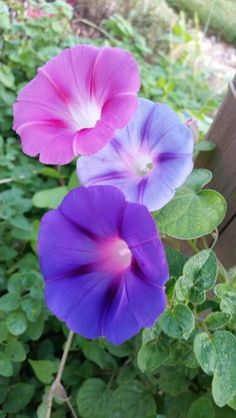
Source: Pinterest
Morning glory
Morning glories, also known as Ipomoea tricolour “Heavenly Blue,” are a fleeting yet magnificent flower that will swiftly cover an arbour or arch for the summer. After the last frost has passed, sow under cover and plant outdoors in a sunny location. They will put on a display of blue funnel-shaped blooms amid heart-shaped foliage for months.
Climbers: Care tips
While different kinds of climbers require different approaches, here are some common care tips for climber plants.
Choose the right climber
As established by the examples given above, there are many kinds of climbers that can scale vertical surfaces in different ways. For instance, some climbers coil themselves around everything in their path including wires and other plant stalks. Some plants form stems around the support structure you provide while others don’t require any support and grow along walls without any guidance. Choose a climber that suits your needs and gardening skills.
Check for growing conditions
All climbers thrive under different growing conditions. Before planting a climber, identify the type of soil that it requires to grow. Moreover, research the plant’s sunlight, watering, and fertiliser requirements as well.
Ensure healthy soil
Make sure to plant your chosen climber in healthy soil, which it prefers. Try adding some compost and a slow-release fertiliser to kick-start the growing process. You can also add mulch or fine bark to retain moisture and keep the weeds at bay.
Water often
While every climber requires different amounts of water, most need moist soil to thrive. So, depending on the climatic conditions, water regularly enough to keep the soil moist but well-drained.
Give them support
Choose the right trellis based on the climber plant you want to grow. The thicker it is, the more weight it can tolerate. You can choose to install the trellis on fences, walls, or even the ground. You can also consider metal or wood stakes as a support option. As the climber grows, you can tie twines or pieces of fabric around them to attach them to the support structure, ensuring that they grow in the desired direction.
FAQs
Can climbers grow without support?
While some, like woody climbers, can grow without support, the majority of climbers cannot. For instance, due to their tough stems, climbing roses, Chinese honeysuckle, and wisterias can grow on their own without any kind of support.
How do you control climbing plants?
Fix horizontal wires 45 cm apart to your fence or wall to support climbers. Run the wire through the vine eyes after spacing them 1.8 metres apart horizontally. By bypassing the ends through the eye and encircling the shank, you may secure them. With a pair of pliers, you can turn the end of the vine eye to tighten the wire.
Housing News Desk is the news desk of leading online real estate portal, Housing.com. Housing News Desk focuses on a variety of topics such as real estate laws, taxes, current news, property trends, home loans, rentals, décor, green homes, home improvement, etc. The main objective of the news desk, is to cover the real estate sector from the perspective of providing information that is useful to the end-user.
Facebook: https://www.facebook.com/housing.com/
Twitter: https://twitter.com/Housing
Email: editor@housing.com



